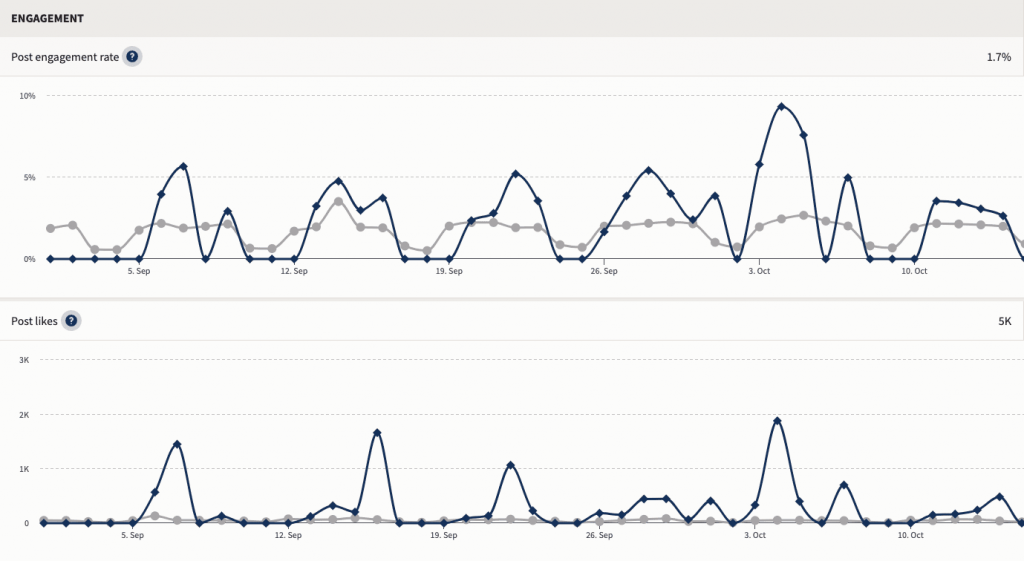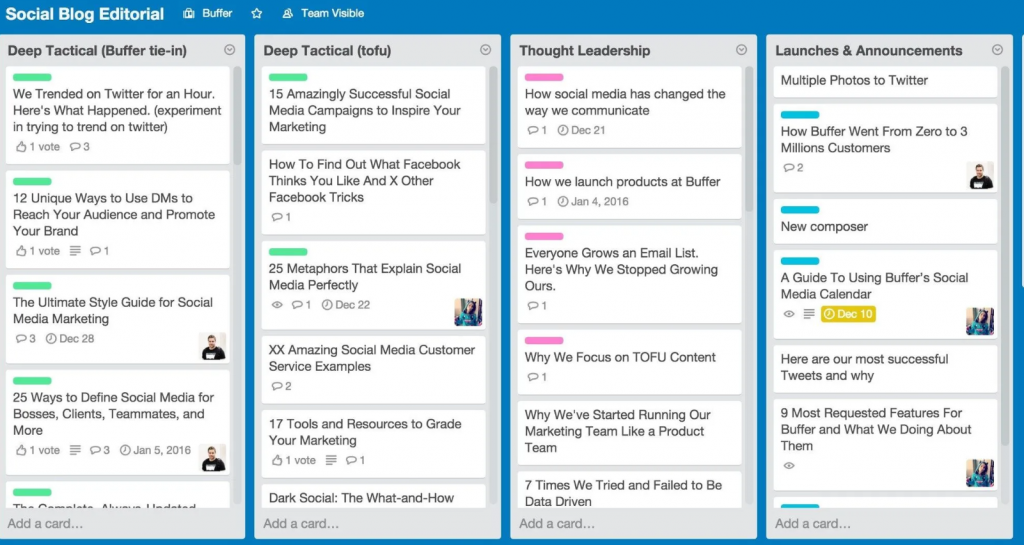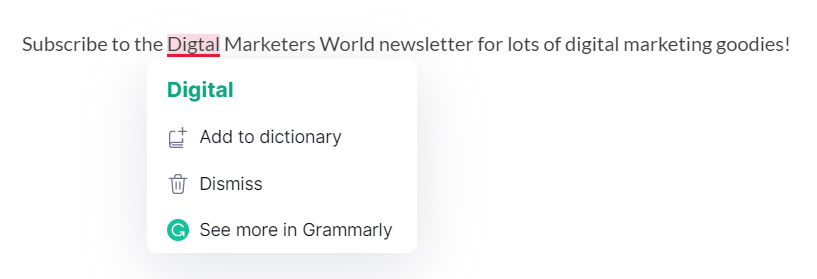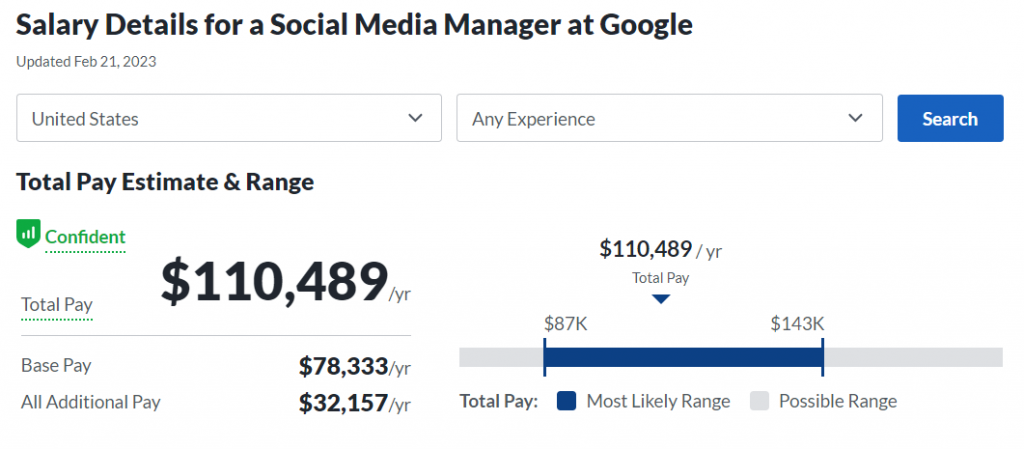What Is a Social Media Manager? — And How to Become One in 2023
Do you enjoy following the social media pages of big brands and admire their compelling content? Have you ever imagined yourself being the person in charge of these pages?
If you are interested in pursuing a career as a social media manager, you have come to the right place! We will discuss the essential aspects of this profession, including its responsibilities, skills, and salary range.
What Does a Social Media Manager Do?
A social media manager, as the name implies, is the person in charge of and responsible for the social media channels of a brand.
Social media managers collaborate closely with other specialists in the marketing team to align the company’s marketing strategy and then execute this strategy using the brand’s social channels.
Social media managers are an integral part of a marketing team, especially if they are in an industry that heavily relies on social media, such as life coaches and businesses.
“Handling everything related to social media” might sound intimidating at first, considering the number of responsibilities a social media manager position entails. However, this should not discourage anyone from entering this field, as it is one of the most fun and creative roles in the world of digital marketing.
In terms of the responsibilities of a social media manager, we can separate them into four distinct groups.
Create Content Strategies
One of the important parts of managing social media is to think like a strategist and devise a content plan that can help you grow your social media metrics and reach your brand’s marketing and business goals.
There is no universal template for creating a social media strategy. Usually, every company and team builds it based on its needs and context. To show you what one such approach can look like, however, let me share my experience with you and show you how we developed a content strategy with one of my teams.
Our social media content strategy usually consists of the following deliverables:
- A list of goals we want to achieve. This list includes anything from increasing the reach of our products to driving sales to improving our brand awareness. Make sure these goals are SMART (specific, measurable, attainable, relevant, and time-bound) and aligned with your company’s overarching strategy.
- A description of our buyer persona. Apart from the needs and interests of our ideal buyers, we also include the names of the social media platforms they use most often.
- A list of target topic areas and post types. Based on the needs of our persona, we then devise the list of topics they find compelling and decide on the format of delivering them (ordinary posts, stories, etc.).
- Post schedule. We then place the list of items from the first step on a content calendar (we used Hootsuite for it). The content calendar serves as our primary organizational tool, as it helps us schedule posts and plan work for content and image creation to ensure they are ready before the intended post date.
- Monitoring plan. This plan includes the list of KPIs we want to track, the tools we use to track them, and the KPI goals we want to reach with our social media activity.
Post On and Monitor Social Media Platforms
When the content strategy is ready, a social media manager will execute it. The main part of this execution is, of course, making the social media posts themselves.
Most of the time, social media managers are responsible for multiple company accounts on different social networks (e.g., Instagram, LinkedIn, TikTok, etc.). Therefore, it is common for them to use some form of a specialized posting tool (e.g., Hootsuite) that allows them to post on all of these social media accounts simultaneously.
After the posts go live, it is crucial for the social media manager to monitor their performance, as it allows them to:
- Do a “lessons learned” on the underperforming posts by identifying the root cause of the sub-par KPIs of that post and fixing the issue for future posts.
- Make sure that the team is on track with its target KPIs.
- Boost the underperforming posts by engaging with the audience in the comments section.
To do this, social media managers can add a dedicated analytics tool to their stack. They can either use a specialized social analytics tool like RivalIQ or simply track the social UTM tags in Google Analytics.
There is also the option to use the built-in analytics features of their social media management tool. Here’s what it looks like in Hootsuite.

Finally, as a social media manager, you can use the analytics features of the social media platforms themselves. The only downside is that you will not have a unified view combining the data from all your platforms.
Oversee the Social Media Management Team
Sometimes a social media manager is more than just a single marketing team member responsible for the social channels. Instead, their role can be that of a team lead who oversees the work of several social media specialists.
In this case, social media managers have additional duties, such as:
- Distributing the work among the teammates and setting deadlines.
- Tracking the performance of each team member.
- Ensuring the well-being of the team.
- Working on the professional development of the SMM specialists in the team.
- Hiring and onboarding new specialists.
Moreover, as a team lead, the social media manager is also responsible for clearly communicating the company goals and strategy to the team and ensuring that everyone is aligned with the company vision.
Track Progress and Report to Stakeholders
An important part of the social media manager’s job is to keep their stakeholders updated on the current state of their social media activities.
Running social media channels will incur costs for the business. These costs include the human resources spent on your social media efforts (yours, the design team’s, the content team’s, etc.) as well as any budget spent on social media advertising.
Naturally, your stakeholders are eager to see your progress to make sure their investment in social media has the ROI they were expecting.
As a social media manager, your stakeholders are your direct management (e.g., the marketing lead), the senior leadership at your company, and your founders.
To sum up, social media managers have a diverse list of responsibilities, ranging from high-level strategic planning and stakeholder management to publishing and monitoring posts.
Now, let’s see what kind of skills you need in order to successfully handle all of these responsibilities.
7 Key Skills a Social Media Manager Should Have
Being a social media manager can help you develop a wide and diverse array of skills.
Apart from having lots of knowledge about the way social media works, experienced social media managers also learn and perfect their copywriting, design, and organizational skills.
Here’s an extended list of skills a successful social media manager should possess for those interested in pursuing a career in SMM.
Skill #1: Organization
Typical day-to-day activities of an in-house social media expert include:
- planning social media campaigns
- handling public relations issues
- doing social listening
- creating tasks for the graphic design team for the post images
- planning the work of the content creation team
- following up with everyone on the team
To manage all of this administrative work, social media managers need to have excellent organizational skills.
To improve their organizational efficiency, they take advantage of project management tools such as Trello or Monday.com with boards that look like this.

Apart from the ability to create task boards, social media managers also need to be great meeting facilitators, as they frequently organize meetings with their teams to brainstorm new ideas or discuss the schedules and deadlines of their tasks.
Skill #2: Attention to Detail
Your social media posts can easily make or break your brand’s reputation, depending on the content you publish. One of the easy ways to hurt your reputation is by leaving mistakes in your posts, either typos or factual
These mistakes can appear both in your content and the image or video that accompanies it.
Therefore, social media managers need to have strong attention to detail to detect and fix these minor issues before they publish the posts and the general public notices them.
Now, let’s do a mini-test and see how well you notice small details. Can you tell us how many differences there are between these two columns?

Was your answer three? If yes, then you have passed this test successfully! The differences were on the first, third, and fourth rows.
Skill #3: Writing & Editing
Both in traditional and digital marketing (e.g., SEO, print ads, influencer marketing, content marketing, email marketing, etc.), quality content is king!
In fact, according to a SemRush study, 44% of marketers have noted that focusing on quality was their main success factor, and social media is not an exception to this rule.
Now let’s see how strong writing skills will benefit you in the following situations
Small Teams. If the marketing team is small and has no dedicated content writer, it is you, the social media manager, who will create the copy and content for the social media posts. So, your writing skills will determine the quality of the content you publish on social media.
Large Teams. If you have dedicated content writers or social media marketing specialists in your team who write the content, your role will change from the writer to the editor. You will need good writing skills to review and suggest edits to the content your team has produced.
Moreover, you will also need to coach your team on content writing best practices. This responsibility, again, requires you to be great at writing.
In terms of the tools you need for content writing, you can also consider using a grammar-checking tool (e.g., Grammarly or ProWritingAid) to make sure that you have left no mistakes in your content.

You can also use the advanced suggestions of these grammar tools to check the readability grade of your content and detect structural mistakes.
Skill #4: Eye for Design
The era of text-only social media posts is over; adding a relevant image or video to your posts has become a must.
Posts with visuals engage your audience more than plain-text ones. According to Linkedin, for instance, posts with an image were able to drive 98% more comments than the ordinary ones.
Therefore, as a social media manager, you will closely collaborate with your design and video production teams to make compelling visuals for your posts.
This is where your eye for design comes into play, as you will be the person who reviews and approves the design drafts.
To develop your eye for design, check out some examples that design community members have posted on Dribbble or Pinterest.

Finally, review the social media posts that famous brands publish on Facebook, Instagram, or LinkedIn.
Skill #5: Understanding Social Media
This one seems a bit obvious, right? Writing great content and adding compelling images or videos is only part of the success.
A skilled social media manager needs to know the specificities of different social media platforms and the general preferences of the target audience there. For instance, following social media trends is important to consider if you manage Twitter and TikTok channels.
For these platforms, you can both create your own trend and hashtag or “piggyback” on existing ones. Here’s what it looks like in real life.

The cat in the video above is part of the ongoing #maxwellthecat trend on TikTok and the French 3D engineering conglomerate Dassault Systemes has joined this trend to promote its brand and ensure its online presence on TikTok.
Skill #6: Flexibility
Social media is a rapidly evolving environment. Trends come and go, and your audience’s interests can shift to something else within mere days. Therefore, social media managers should be flexible enough to keep up with all these changes.
It does not mean social media managers should stop making strategic plans and content calendars. Instead, when making these plans, they should leave a bit of room for flexibility and consider that some of their plans might change after several weeks.
Skill #7: Communication
Communication skills are a must for a social media manager. There are two sides of communication for this position:
External. The posts you publish under your brand’s name are essentially you communicating with your audience, and how you communicate determines whether your audience actively engages with your brand or not.
Also, you might take the role of a community manager who is constantly in contact with your audience and interacts with them via comments and direct messages on a daily basis.
Internal. Inside your company, you need to constantly communicate with your stakeholders, as well as your SMM team, design team, and content team. A social media manager can effectively communicate the company vision and plans to their team as well as pass on the various needs or requests of their teammates to their management.
Social media managers are people with diverse skills. They need to be proficient in design, content writing, and communication and have a deep understanding of how various social media platforms work.
Now, let’s answer another burning question—how much do you earn as a social media manager?
What is the Average Salary of a Social Media Manager?
Social media managers are skilled professionals who can make a great impact on the bottom line of their companies; the salary they get reflects the importance of their role in the company.
According to the employer review platform Glassdoor, the overall median salary for a social media manager job posting is around $51,800 per year for a full-time SMM in the United States, including all additional pay like bonuses and commissions. Depending on the years of experience and industry (and if you are working part-time), however, it can range between $34,000 (for an entry-level position) and $79,000 (for an expert).

The salary you get for this position will also directly depend on the country where your company operates. For instance, the wages in the British market are slightly lower, with recruiters offering a median of £37,400 per year (which is approximately $44,900 with the current exchange rate) for the social media job.

Again, depending on your experience and industry, your salary in the U.K. can range between £25,000 ($30,000) and £60,000 ($72,000), according to Glassdoor algorithms.
Although the salary ranges for social media managers already look quite promising, don’t forget that, with hard work and persistent learning, you can become a superstar who can confidently negotiate a higher salary and aim at working at some of the most prestigious companies out there.
For instance, if you manage to land a job at Google, the salary range you can negotiate will significantly increase—reaching $110,500 per year.

From the statistics above, we can also see that experienced social media managers can earn up to $143,000 per year at Google.
To conclude, the salary range for the position of a social media manager is quite impressive, especially if you work hard and land a job at one of the bigger, more prestigious companies.
Now that you know about the responsibilities, necessary skills, and salaries for this position, it is time to help you figure out how to start your career as a social media manager.
How to Become a Social Media Manager in 2023
Just like with any profession, there is no distinct path you must take to become a social media manager.
However, there are general steps you can consider to learn this profession and land a social media manager job. Here is what you can do:
Consider getting a relevant degree. There is an ongoing trend of companies not requiring relevant college degrees for their positions anymore, such as Google and other big tech companies).
However, getting a bachelor’s degree in business or marketing can kickstart your career, as you will learn many core marketing concepts and processes in college.
Apply for an internship. I started my career path as a marketing intern. So did many of my colleagues. Getting an internship position will help you work with experienced social media managers and learn from their extensive experience in the field.
Take advantage of online courses. There are many great online educational platforms, both free and paid, that have courses on social media marketing. So why not sign up for one and enjoy the perks of learning the profession at your own pace at home?
Now Over to You
Social media managers are an integral part of the marketing team. With their help, the company can increase its social media presence, help drive sales, and reach its business goals.
Becoming a social media manager is a great choice. I hope this guide has answered some of the pressing questions you have about this profession.
But don’t stop here, we have many other great guides on the topic of social media on our blog, so why not check them out too?

Sona Kalantaryan is a senior digital marketer with a creative past. Big fan of high cinema and well-optimized landing pages. She authors guides by sharing the best practices and does it the right way!
